
DEEP INTO THE COMMUNITY
Black Diamond Athlete Angela Hawse is a guide for change.
You're eligible for Free Shipping!
$0.00 USD

Ski season is here! It’s an exciting time of year, and many have started waxing skis, breaking in boots, cutting skins, practicing transceiver searches, and brushing up on backcountry travel skills. But wait, let’s not forget to change out the batteries and update the firmware on all our critical snow safety electronics as well.
Why?
In this QC Lab, we explore electromagnetic interference (EMI), how it affects backcountry safety, and why keeping your firmware up to date should be on everyone’s preseason checklist.
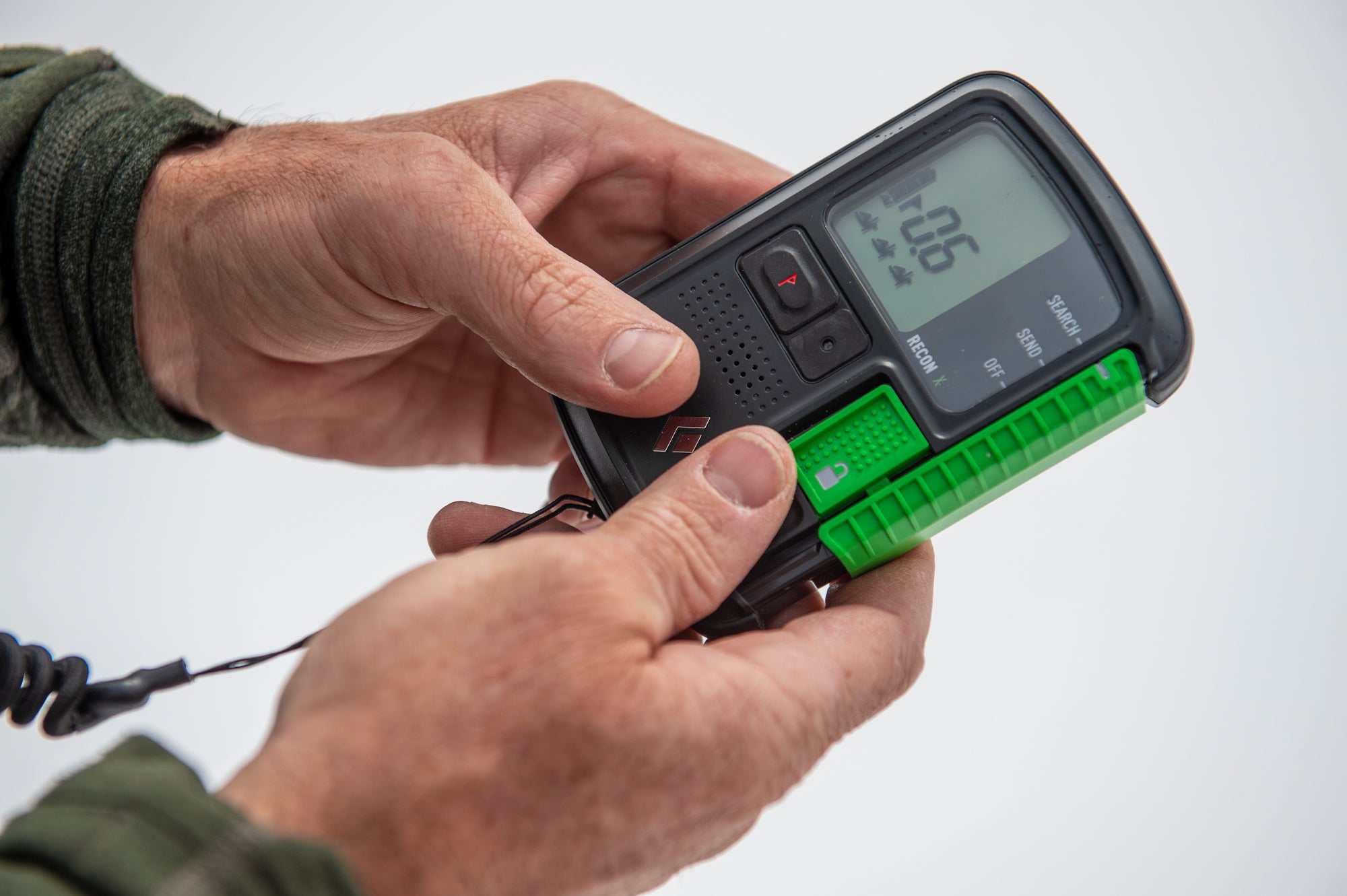
There has been an increasing amount of discussion around EMI and its negative effects on the performance of avalanche transceivers among the snow safety community. Although this is not a new topic, it is taking on a heightened level of awareness and importance as the number of winter backcountry users increases and people are carrying more personal electronic devices such as smart phones, smart watches, GPS devices, heated clothing, and electronic airbag packs.
Avalanche transceivers are essentially radios that work by communicating on an internationally accepted frequency band, 457 kHz. A transceiver in send mode transmits a signal pulse every second which is defined by ETSI EN 300 718-1. When switched into search mode, the transceiver will listen for nearby signal pulses and display distance and direction information to aid in locating transmitting transceivers (avalanche victims). The further away you get from a transmitting transceiver, the fainter the signal becomes. At the maximum useable ranges, a searching avalanche transceiver is “listening for a whisper.” It is here that the transceivers are most susceptible to EMI.
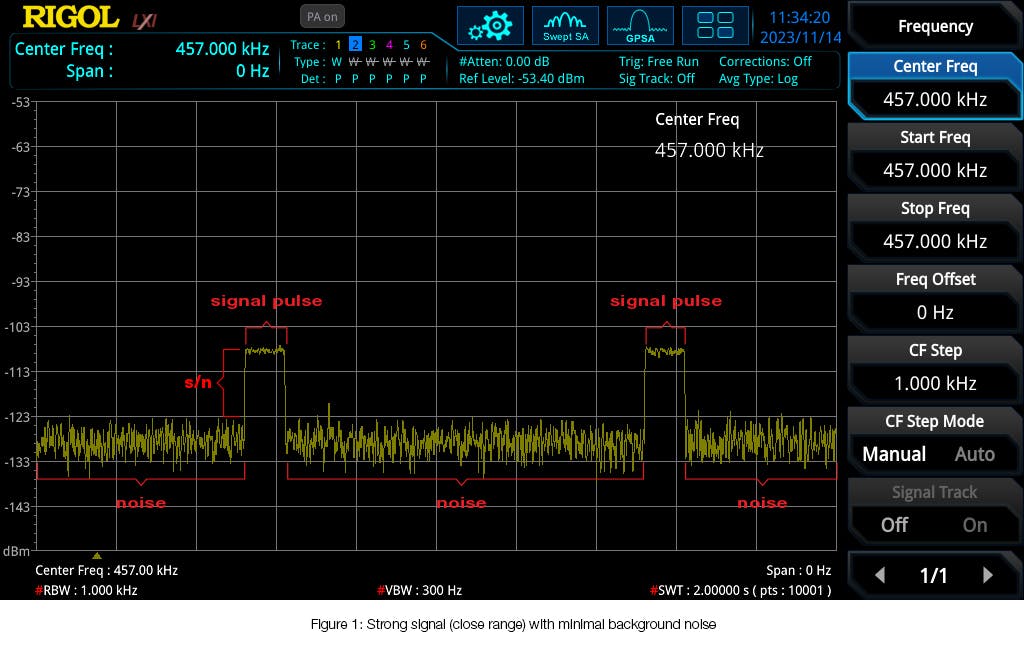
In this QC Lab article, we will focus on active sources of EMI as they are often the highest concern and can generally be mitigated through some basic user knowledge and actions. Most electronic devices generate EMI at various frequencies, and at various strengths. When the EMI happens to be near the 457kHz frequency band, it can negatively affect the performance of transceivers. Keep in mind that most consumer electronics are not specifically designed for backcountry travel and have little regard for the sacred 457KHz frequency band.
Let’s start with some simple spectrum analyzer images to understand the concepts better. The signal from an avalanche transceiver in a relatively noise-free environment is shown in Figure 1 below. Some level of background noise is unavoidable in the real world. A truly noise-free environment can only be created in a laboratory setting. As you can see, the signal level is significantly higher than the noise level. The difference between these levels is known as the signal-to-noise (S/N) ratio. The S/N ratio is important as the transceiver’s processor utilizes this information to identify a true transceiver signal from everything else going on.
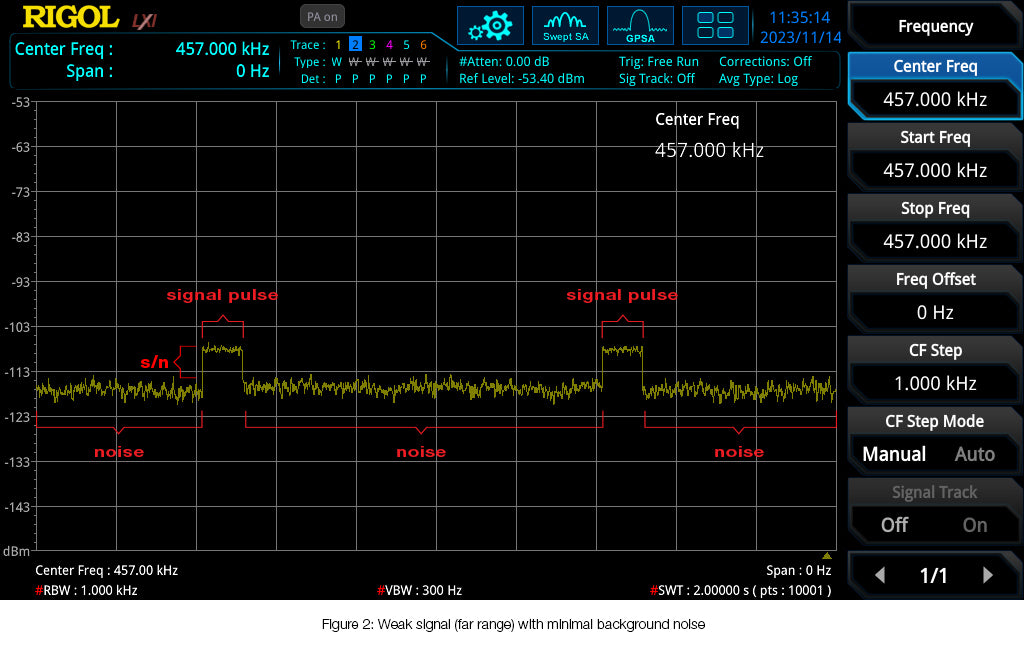
As you get further away from the transmitting transceiver and the signal becomes weaker, it looks more like Figure 2 below. Notice the decreased signal to noise ratio.
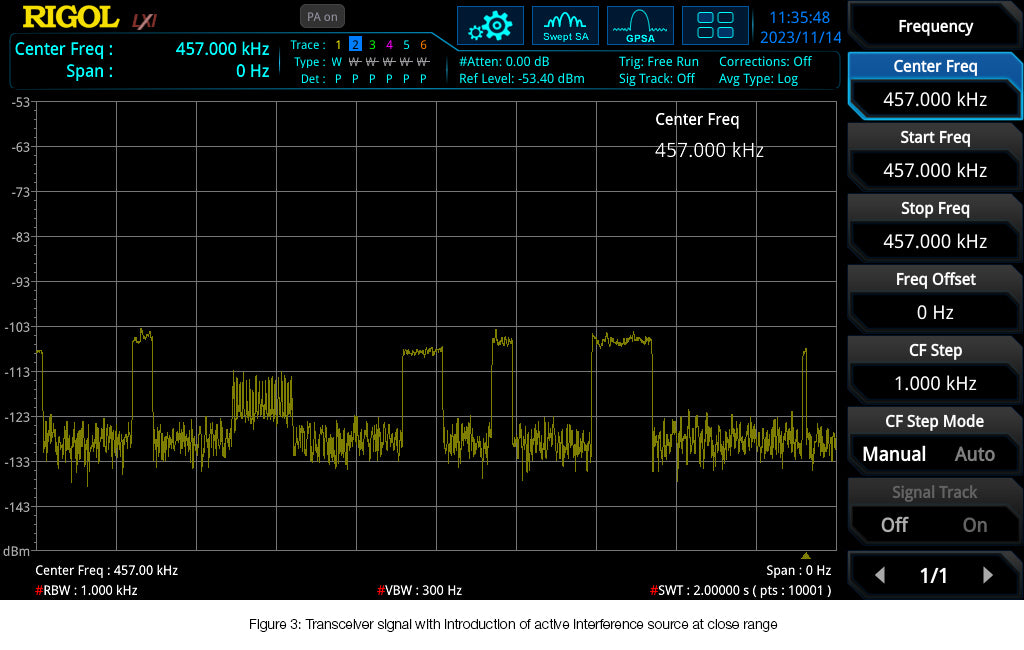
The above images show the transmitting transceiver signal in a relatively noise free environment. If interference from another electronic device is introduced, the S/N ratio will decrease even further as spikes in noise will begin to drown out the desired transceiver signal making it indistinguishable. Can you tell the difference between the transceiver signal and noise spikes caused by active interference in Figure 3 below?

In the above image, it is much more difficult to distinguish the signal from the noise. This is the information that your beacon is trying to process.
The presence of interference can result in reduced range, reduced reliability of directional indicators, and ghost signals. Ghost signals occur when noise spikes resemble a true transceiver signal, causing the processor to interpret them as a transmitting transceiver. This degradation in performance is intensified when operating at the far end of the transceiver’s range.
The short answer: because it can slow down your search. In an avalanche rescue scenario, when first trying to acquire a signal during the start of the coarse search, the signal to noise ratio can be very small, and any interference can be detrimental. Time is of the essence and the clock is ticking! Ghost signals and false directional arrows can send you off in the wrong direction, and waste time. Reduced range means you must reduce your search strip width as well as get closer to the buried victim before you get a reliable signal. This is when it is most important to reduce the number of EMI sources.
The primary cause of EMI is other electronic devices in close proximity to the searching transceiver. In this case, distance is your friend, because EMI from an electronic device will decrease exponentially as you move it further away from your searching transceiver.
Using this principle, the “20/50 rule” was born. We can mitigate noise by keeping EMI sources a sufficient distance away from the transceiver. The 20/50 rule was adopted across the industry to help users remember to keep electronics and other sources of interference at least 20cm (8in) away from a sending transceiver and 50cm (20in) away from a searching transceiver. If you are only going to remember one thing, and make sure your partners know it too, it should be the 20/50 rule!
It is important to understand that this is a guideline and it in no way guarantees that all EMI will be mitigated. There are many types of electronics on the market, and some will cause interference at distances greater than 50cm. It is impossible to test all combinations, so we will focus on common personal electronics that are often found in the backcountry.
Okay, that’s good to know, but how much interference do electronics and other items often found in the backcountry really create? To better answer this question, the BD QA crew set out to investigate. The focus of this testing was to better understand the reduction in stable signal (a combination of range and reliability of the directional arrows).
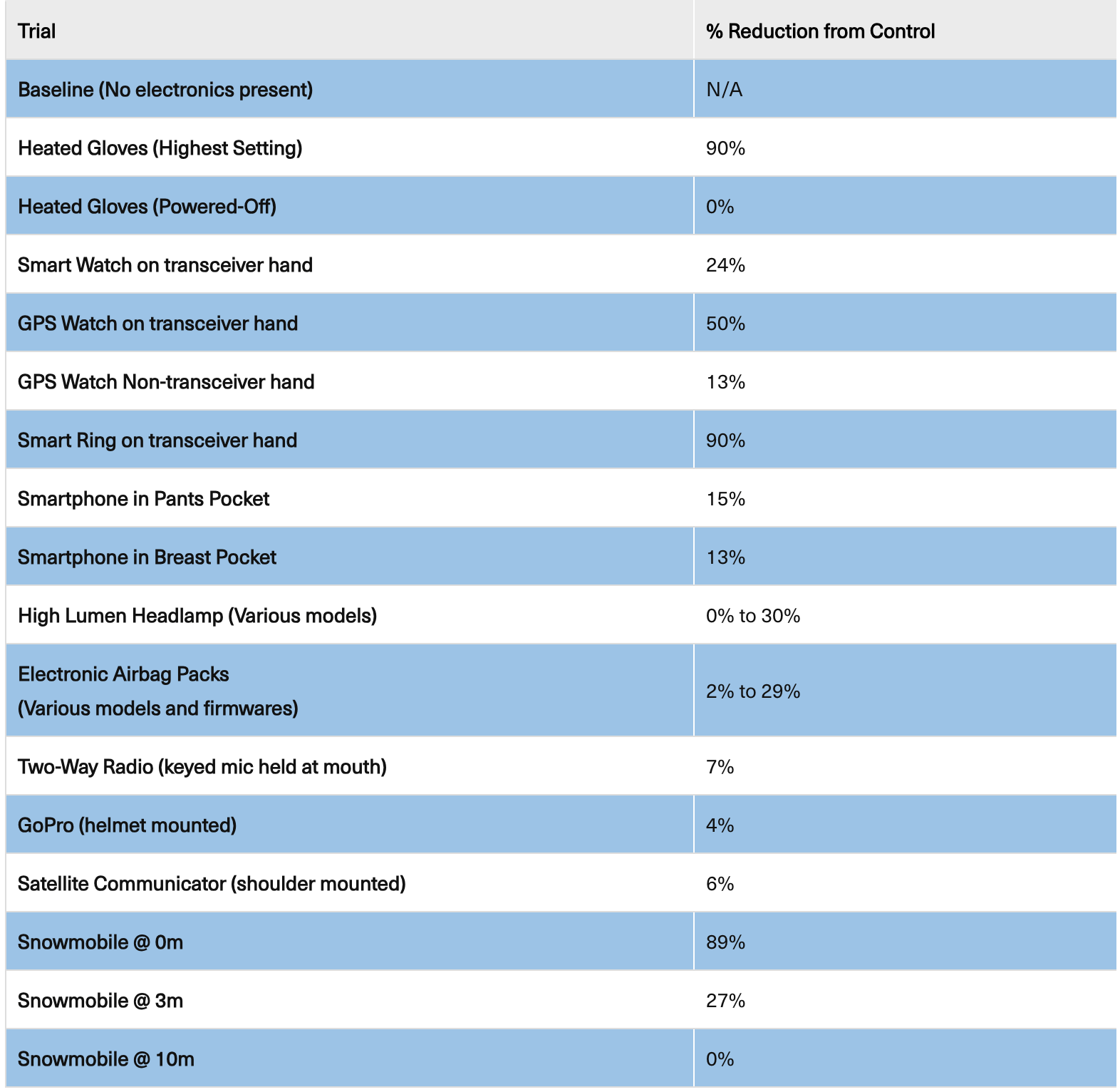
The QA crew drove out to the Bonneville Salt Flats west of Salt Lake City to find a wide-open barren space, away from as many possible sources of electromagnetic interference found in the city.
A transceiver in send mode was placed at the end of a 100m tape measure. It was then slowly approached with a searching transceiver until a steady signal, both distance and direction indicators, was indicated. The distance at this point was then recorded.
Various electronics often found in the backcountry were used in our test, including smart watches, GPS watches, smartphones, two-way radios, action cameras, satellite communication devices, electronic airbag packs, and even a snowmobile. The searching transceiver was held at 50cm from the torso using a static tether to help maintain the appropriate distance. Each item was then placed in a normal use position as noted below.
The goal was to determine how bad it might be to violate the 20/50 rule. To do so, many items were held closer than 50cm (i.e., heated gloves and smart watches). Each item was tested three times, and the average taken. We then calculated the reduction in range compared to a baseline with no other items present.

As you can see, there was a wide range of reductions in performance depending on the power of the devices, and how close they are to the searching transceiver.
Some Caveats:
1.) These items were tested one at a time, and it is likely that there would be a compounding effect from multiple concurrent devices.
2.) The testing was conducted using a single pair of transceivers and a random selection of electronic devices. They do not represent every device out there. Personal electronic devices will continue to get more powerful over the coming years.
Transceiver and electronic airbag pack manufacturers are continually refining their firmware to improve performance (much the same way the apps on your phone are continually being updated). Firmware updates can improve features, extend battery life, reduce harmful interference being generated, and improve the way interference signals are processed.
It is of utmost importance to keep your firmware updated for these products. But we know many people do not. Don’t be one of these people. Update your firmware now. It’s easy and can often be done using an app on your phone. Refer to the manufacturer’s website for information on performing firmware updates.
1. Be aware of EMI.
2. Is EMI the most important factor in your backcountry safety?
3. Some level of EMI is unavoidable but can be kept to a minimum by having awareness of what electronics are being used and where you place them. Good practice is to discuss this with your group at the trailhead before heading out.
4. Keep your firmware up to date on your transceiver and electronic avalanche pack.
5. Some modern transceivers can sense the presence of interference and will provide a visual indication on the screen that your search strip width should be reduced.
6. Like many mountain safety and risk decisions, it is your responsibility to understand your equipment and your group’s risk tolerance.
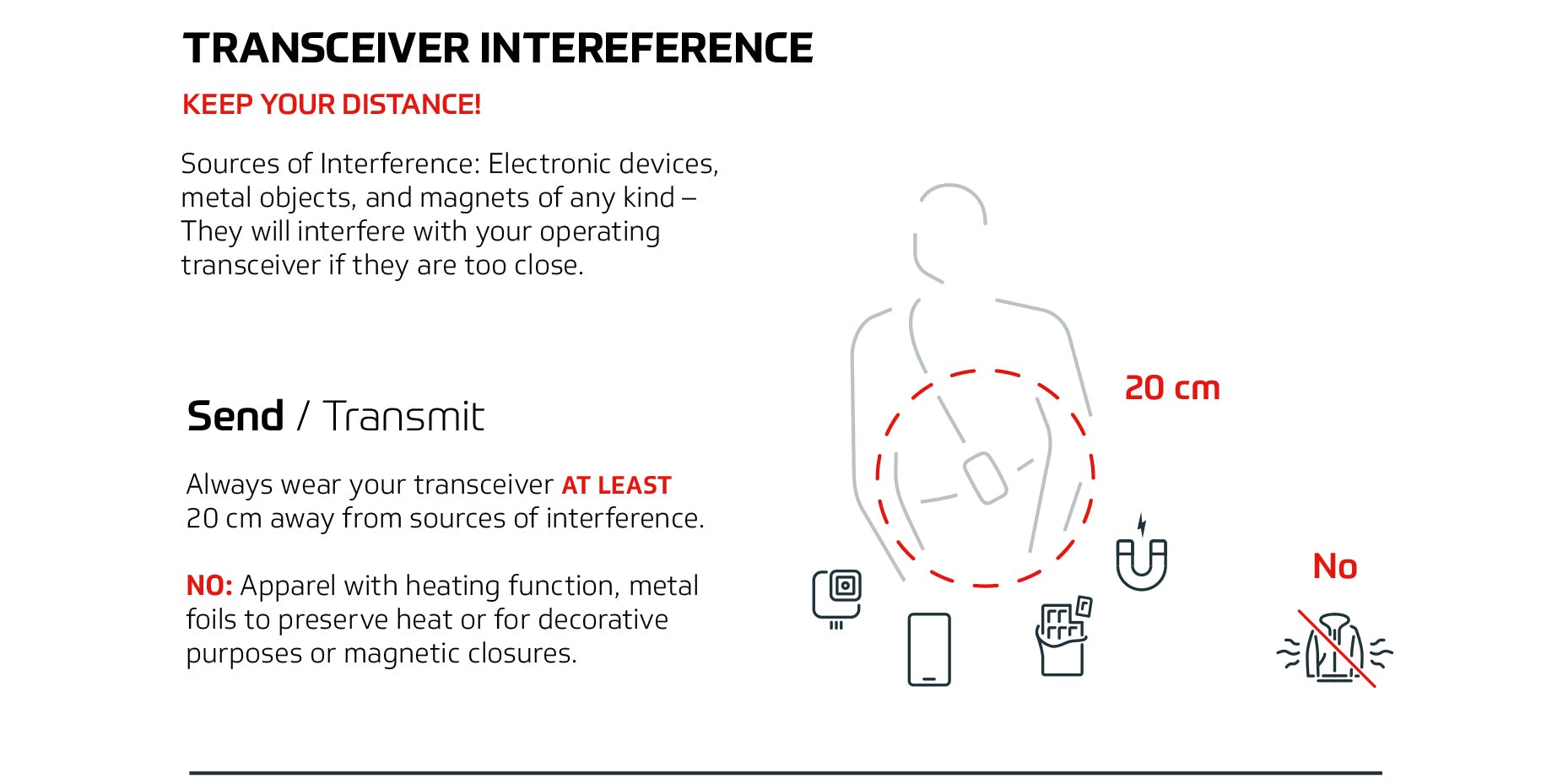
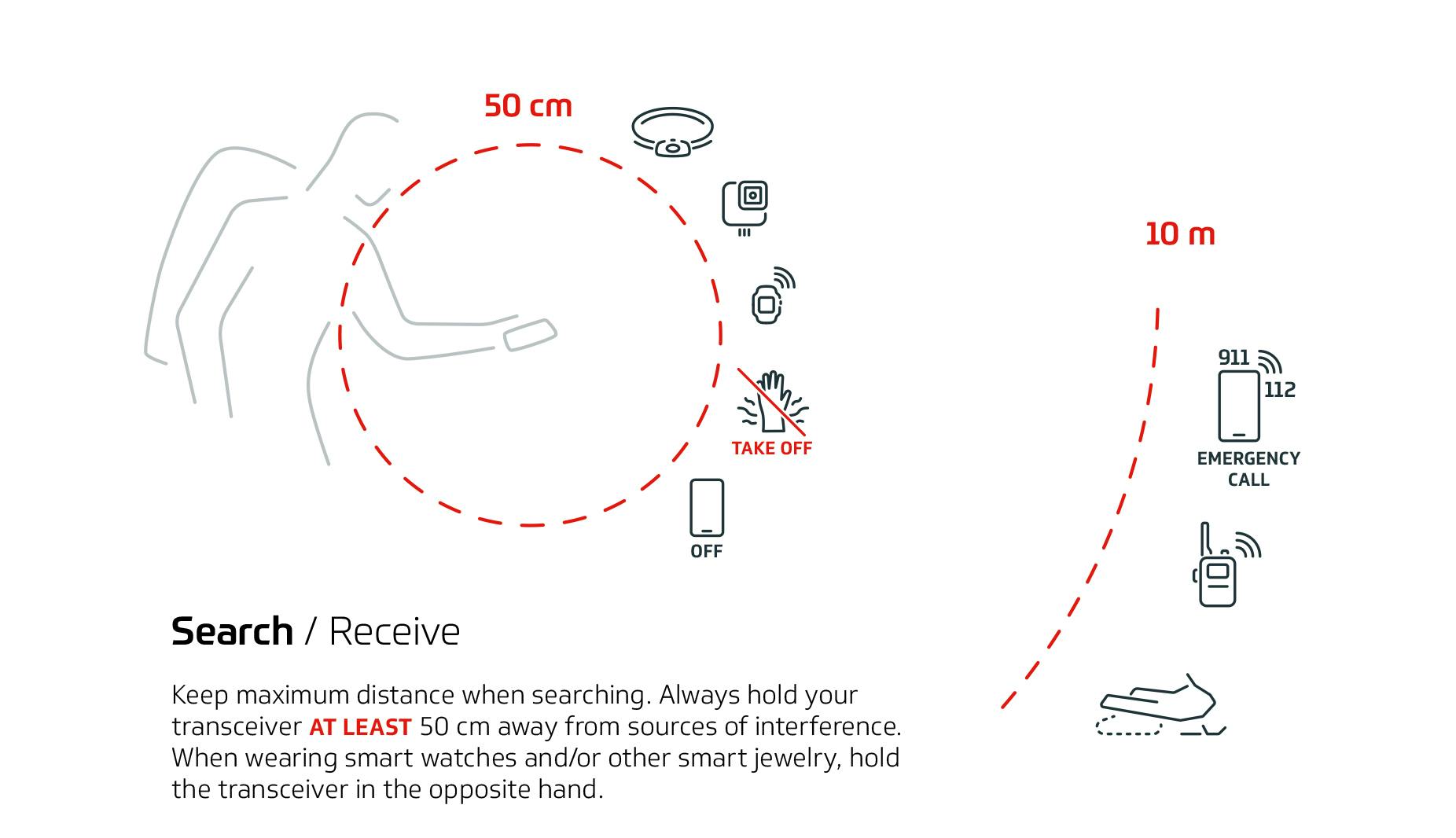
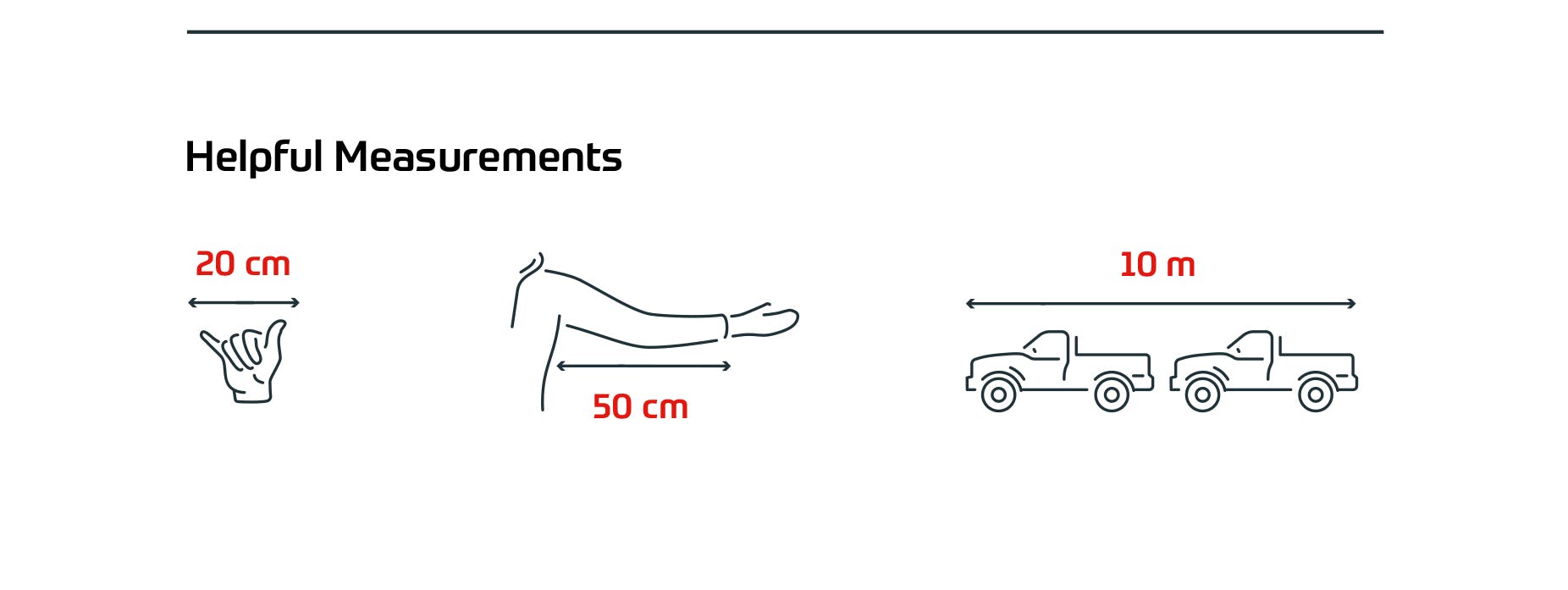
For further reading on electromagnetic interference in avalanche transceivers refer to the UIAA position statement found HERE.
Stay safe, stay stoked.



Follow BD Athlete Yannick Glatthard deep into the Swiss Alps as he shares his home...
Follow BD Athlete Yannick Glatthard deep into the Swiss Alps as he shares his home mountains with close friends.

Follow Dorian Densmore and Mya Akins for another winter season of steep Alaskan spines, backyard...
Follow Dorian Densmore and Mya Akins for another winter season of steep Alaskan spines, backyard couloirs, and deep adventures in the mountains.
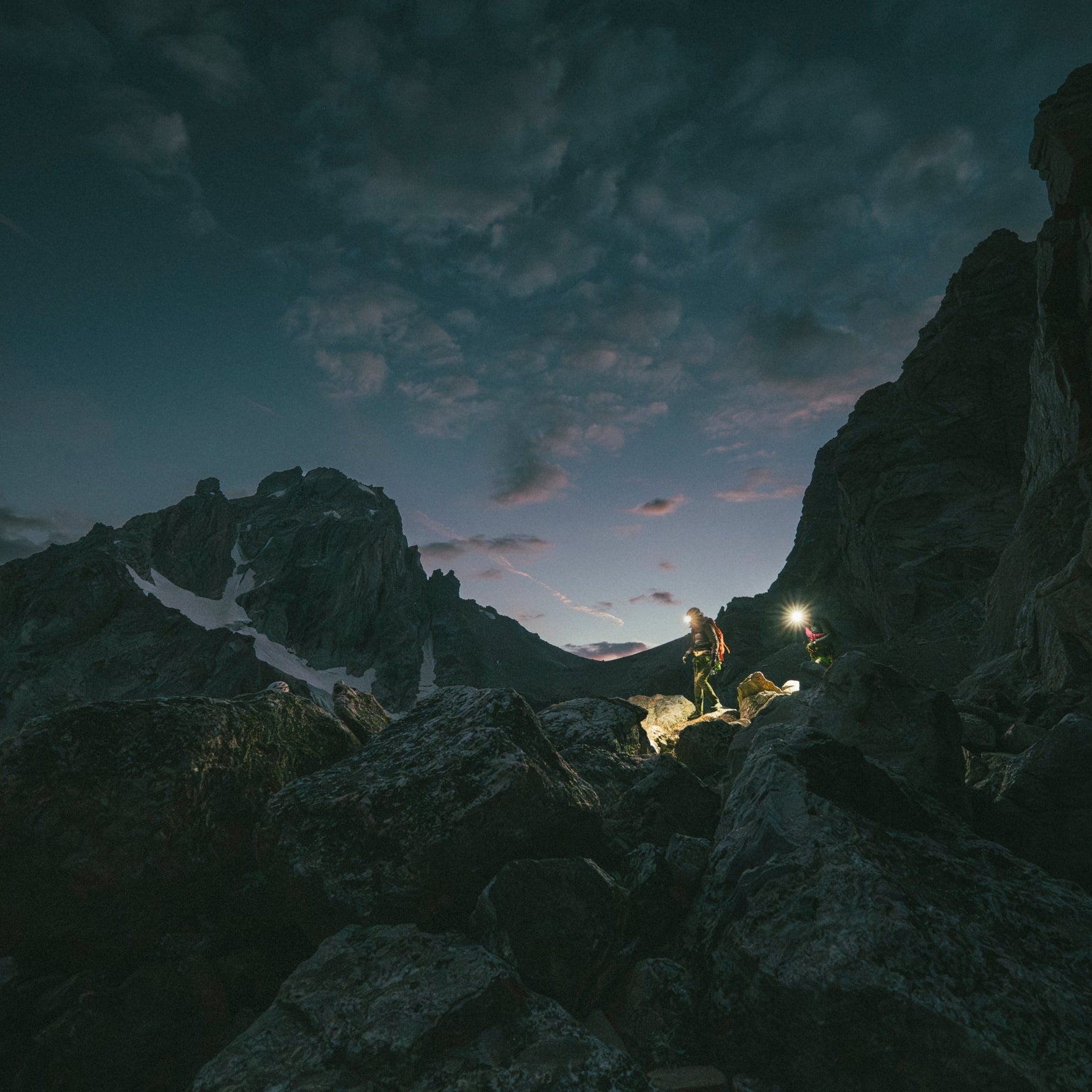

Watch BD Athlete Alex Honnold throw down on some hard trad high above Tahoe.
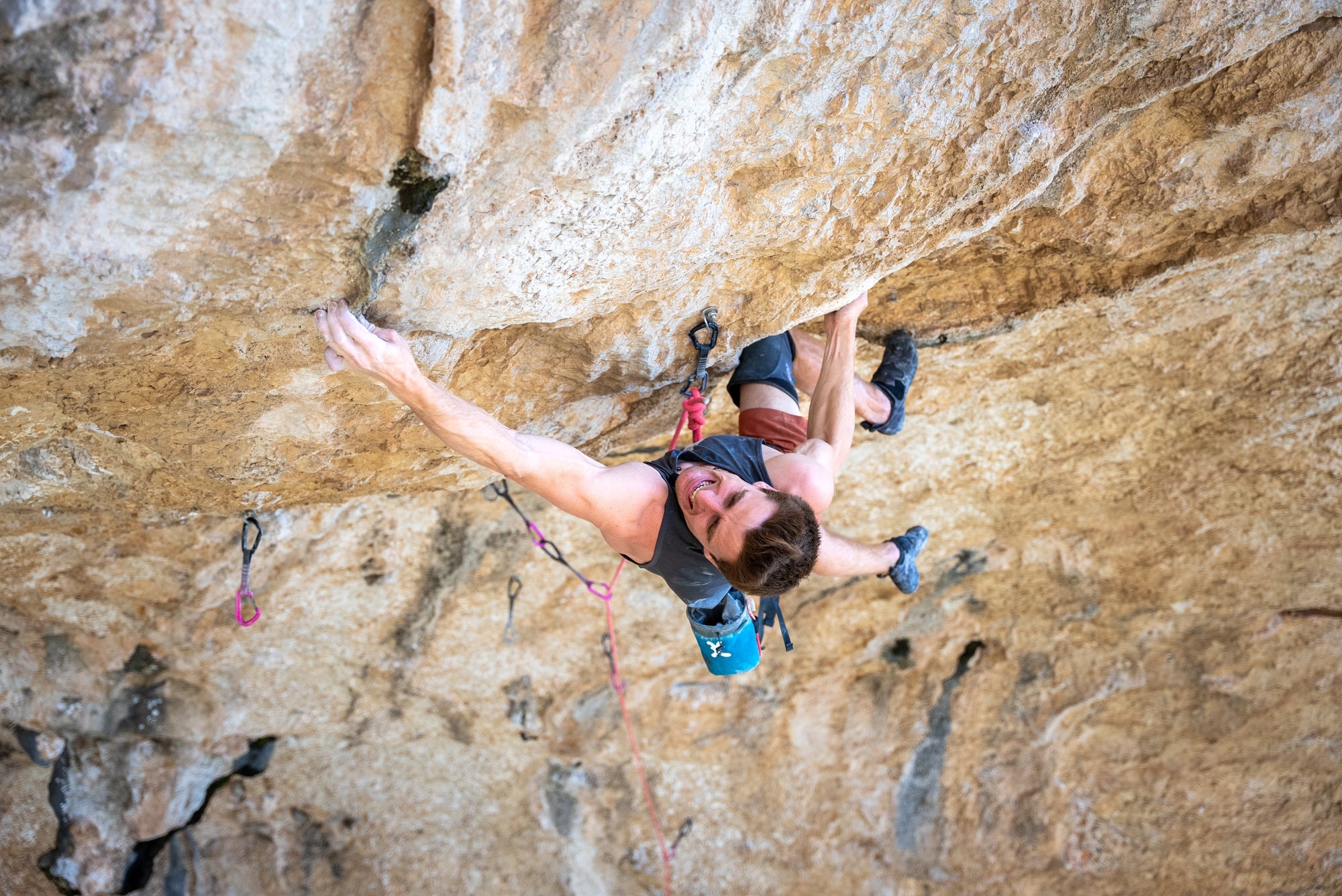

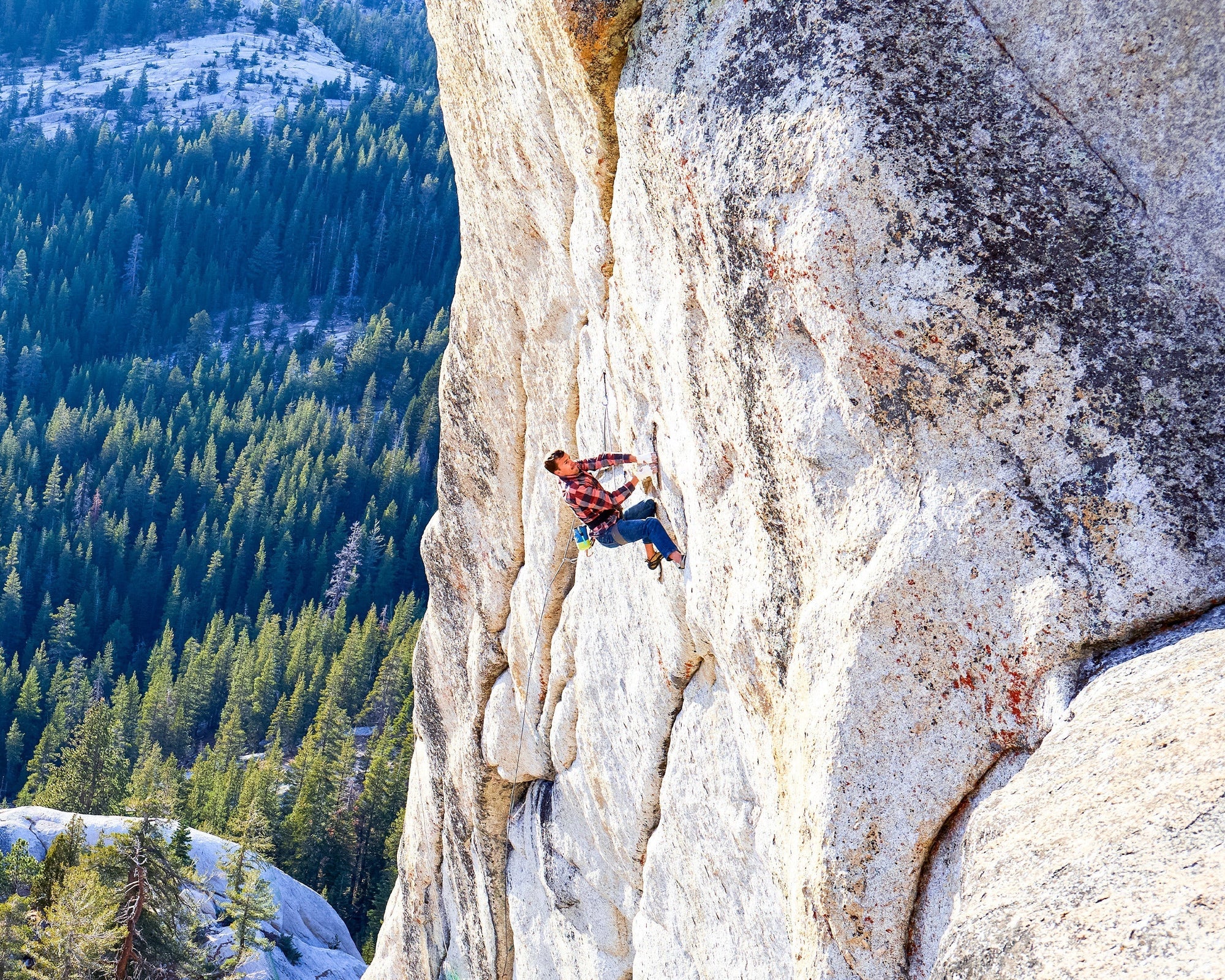
In 2012, filmmaker and photographer Ben Ditto, and professional climber Mason Earle equipped an immaculate...
In 2012, filmmaker and photographer Ben Ditto, and professional climber Mason Earle equipped an immaculate line in Tuolumne’s high country. But their attempts to free the route were thwarted when Mason’s life changed drastically. With the help of Connor Herson, Ditto and Mason found a way to keep the dream alive.
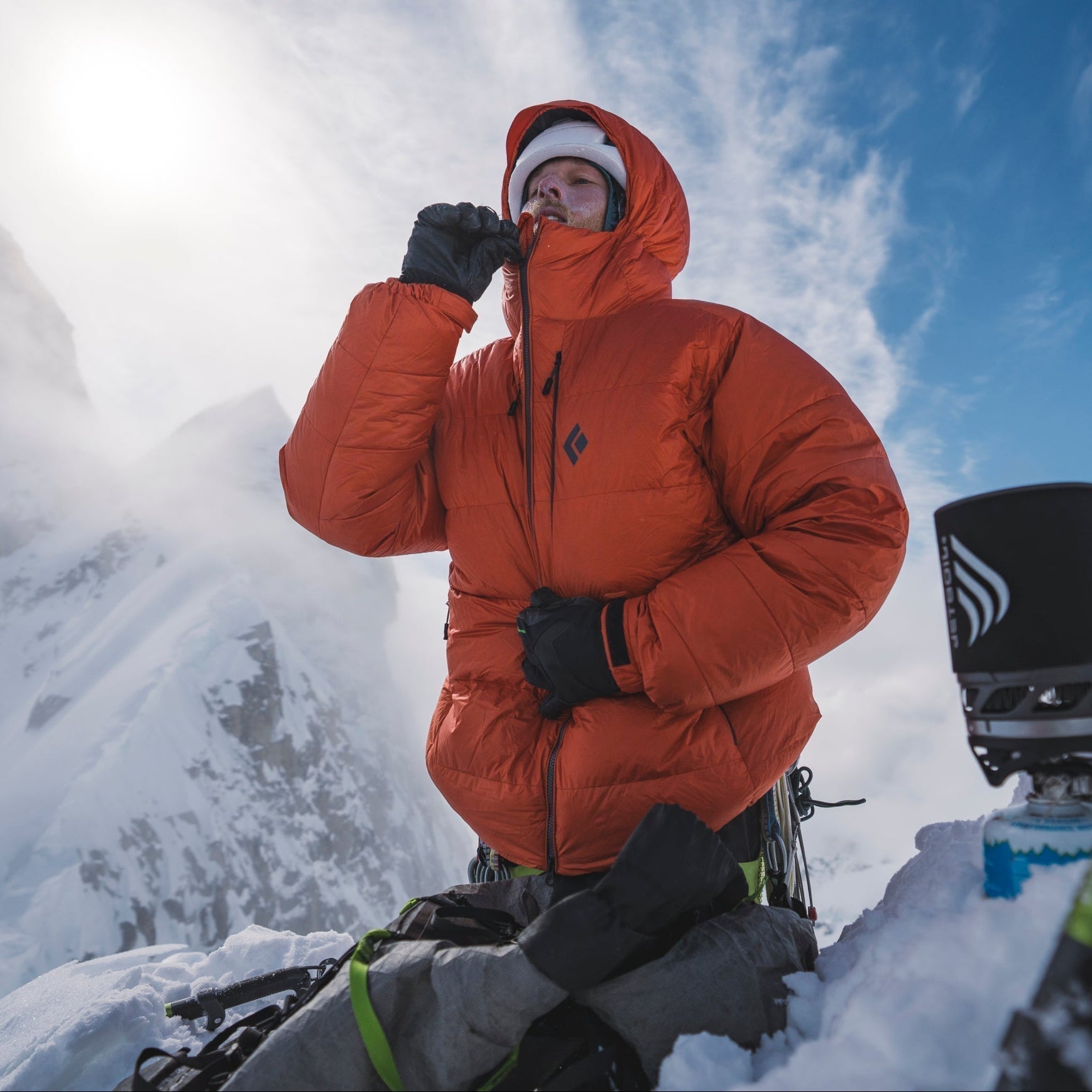
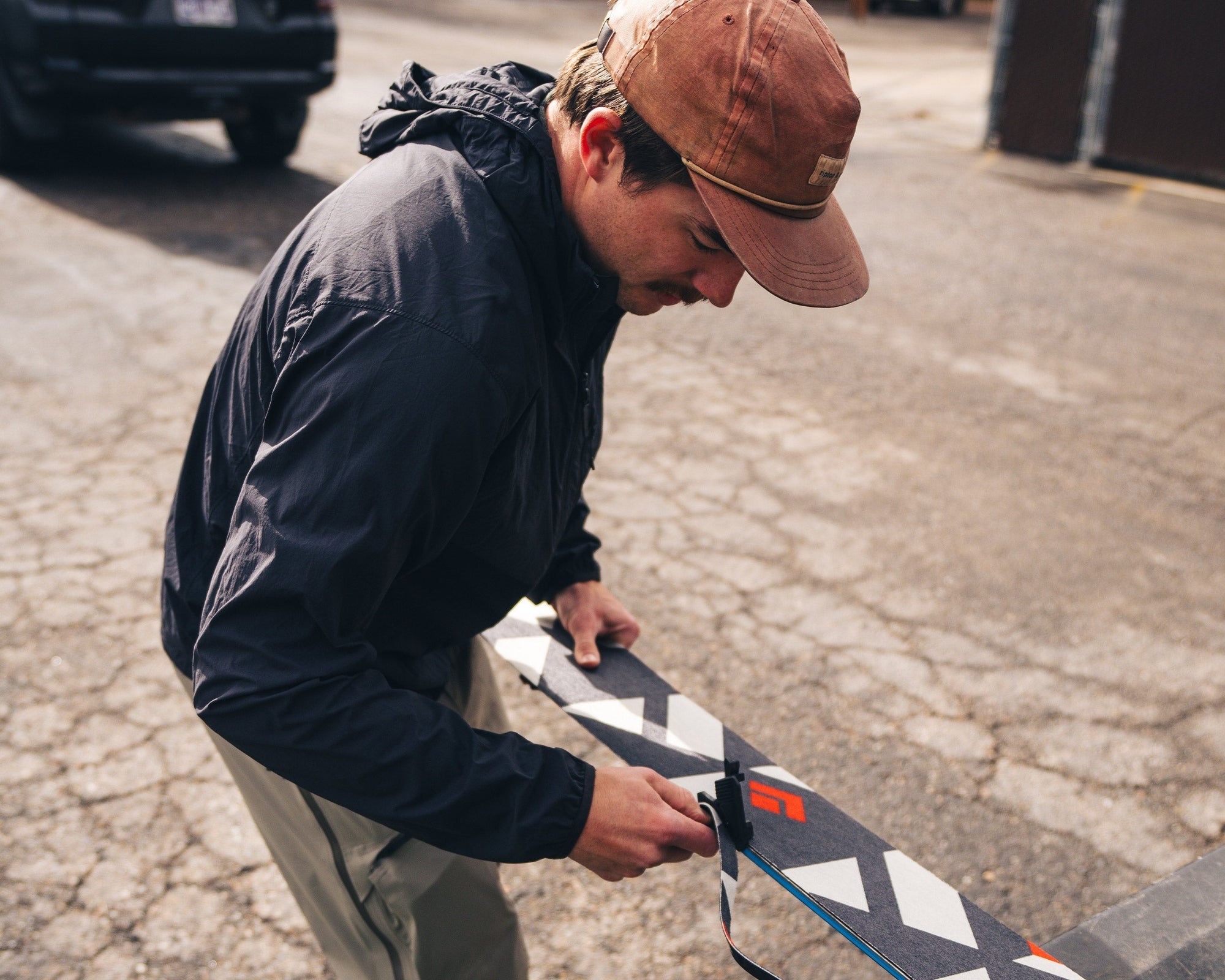
Watch and learn as our Field Test Coordinator runs you through a step by step...
Watch and learn as our Field Test Coordinator runs you through a step by step process of trimming and setting up any STS-style Black Diamond skin.


Every climber has a few lines they dream about. Whether inspired or haunted—or sometimes both—these...
Every climber has a few lines they dream about. Whether inspired or haunted—or sometimes both—these lines can push us beyond what we thought we were capable of, in turn teaching us who we really are. BD Ambassador Ethan Salvo recently restructured his entire life to focus on two climbs that pulled him into the void with only one way out … getting to the top. This is his story of sending Dreamcatcher and becoming the first Canadian to climb V16 in the same week.
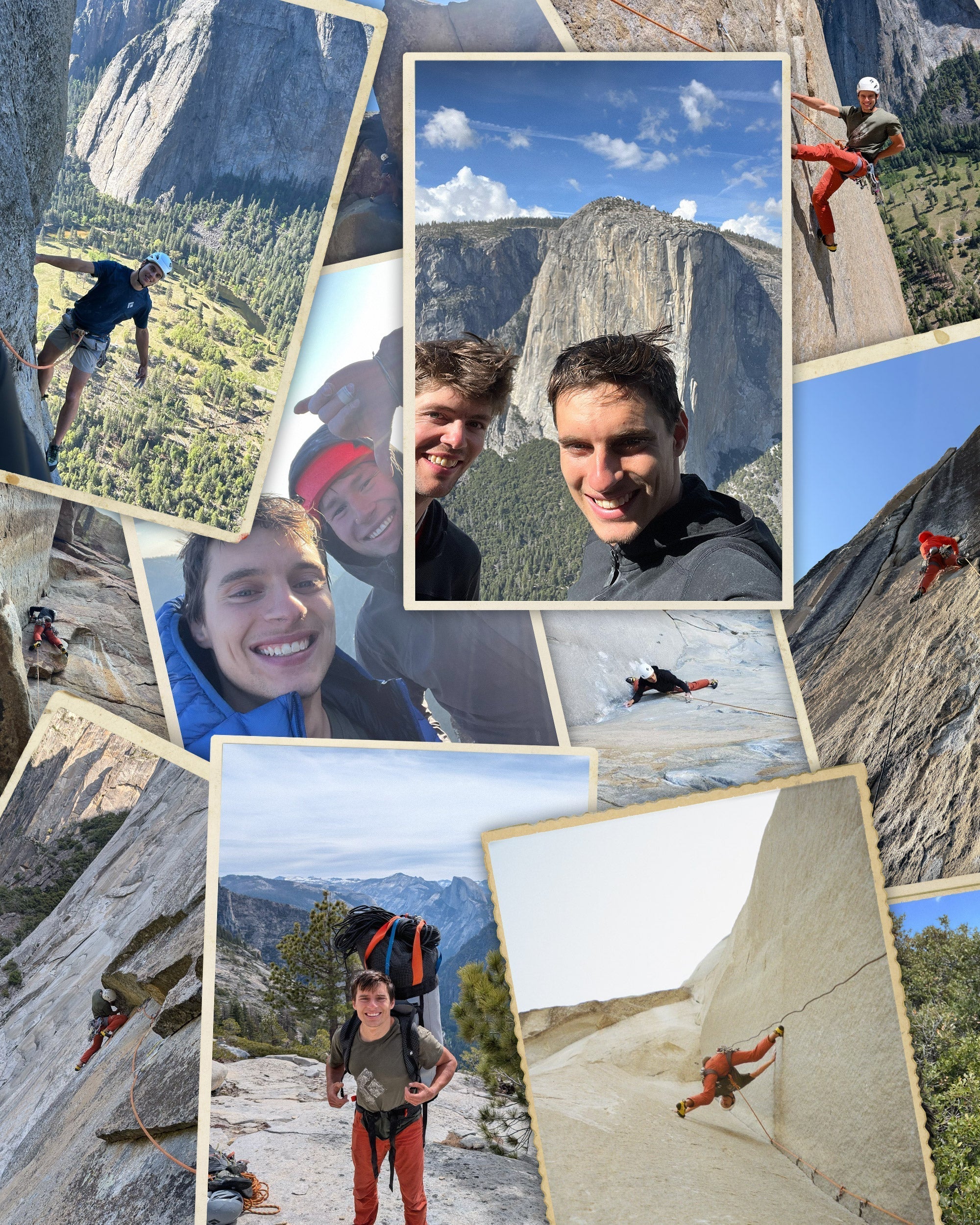
BD Athlete Connor Herson spent as many weekends as possible in the Valley this spring...
BD Athlete Connor Herson spent as many weekends as possible in the Valley this spring during a grueling quarter at Stanford. The objective? Ground up, in-a-day ascents.
